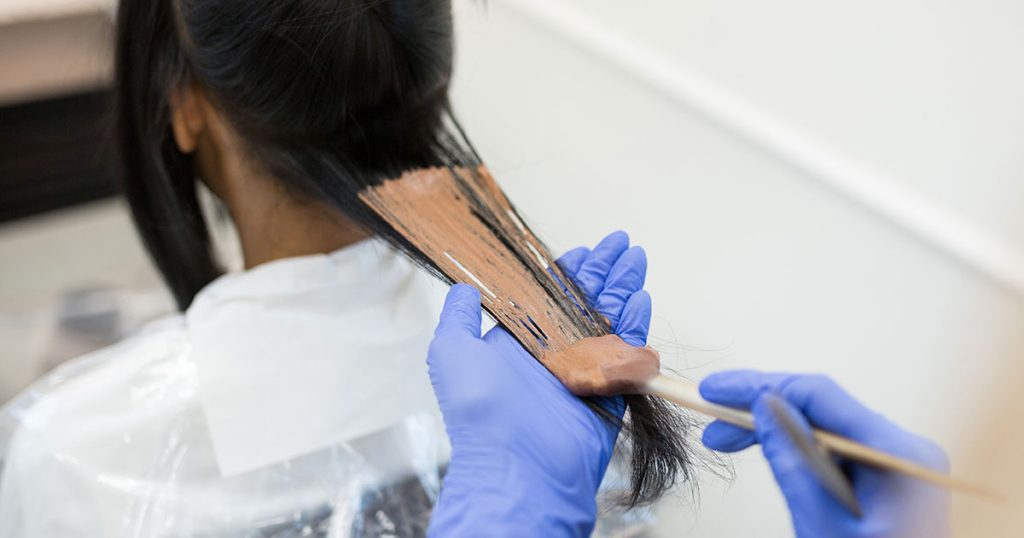
With over one-third of adult women estimated to use hair dye in the U.S. (1), hair dye and breast cancer have been a topic of interest with researchers for some time. A study published in December in the International Journal of Cancer sheds some light on the controversial issue. In the paper, researchers examined women who were part of the “Sister Study,” which followed 46,709 breast cancer-free women who were sisters of survivors. What they found was a significant link between both permanent hair dye and hair straightener use and breast cancer, with African-American women being disproportionately affected.
What African-Americans Need to Know
According to the study, women who regularly used hair dye increased their breast cancer risk by 9% compared to women who did not use it. Drilling down on the data, however, the researchers found that women of color increased their risk by an incredible 45%, while white women just 7% (2). For women who apply hair dye every 5-8 weeks, the stakes are even higher, with African-American women increasing their risk level by 60% and Caucasian women 8% (3).
Chemical straightener use was found to increase breast cancer risk by 18% in all women, both black and white, with higher risk levels associated with higher frequency of use (2). Women of color are more likely to use these products, though, so while risk levels are equal between the races, exposure levels are not.
This disparity is particularly alarming because black women are already at a disadvantage when it comes to breast cancer. African-American women are more likely to die from breast cancer than any other race. And among those with estrogen receptor-positive tumors, they are more than twice as likely to die within the first three years, as compared to white women. Treatment is more difficult for women of color since they are more likely to be diagnosed with triple negative breast cancer, a notoriously difficult cancer to treat, with a higher mortality rateThe measure of the number of deaths in a particular population., and they are more likely to be diagnosed at a later stage with larger tumors.
How Do These Hair Products Cause Breast Cancer?
Breast cancer risks can be increased by a multitude of risk factors, including some environmental risk factors, many of which we don’t fully understand. So we can’t say for sure how these products are causing breast cancer, or even if they are directly causing breast cancer. We only know there is a very clear link. However, the study’s researchers do point out:
“Many hair products contain endocrine‐disrupting compounds and carcinogens potentially relevant to breast cancer. Products used predominately by black women may contain more hormonally‐active compounds.” (2)
While no specific compound or chemical was examined in the study, it is important to note that a wide range of carcinogens are routinely included in hair dye, including many that have been proven to cause cancer in animals (4). One 2018 study that tested hair products used by U.S. black women, found 45 different endocrine-disrupting or asthma-associated chemicals, including 5 compounds in children’s hair relaxers that had been outlawed in the European Union (5).
What Can We Do?
The good news is that using hair dyes and straighteners are a breast cancer risk factor we can control. A great alternative to permanent hair dye is going au naturel or using a temporary dye or hair rinse—the study found little to no increase in breast cancer risk for those using temporary rinses (2). For some, an old-fashioned blowout, flatiron or hair rollers could be a less harsh and more flexible substitute for chemically questionable hair straighteners.
And if the topic comes up, share your knowledge with your best bud. Not only can these products increase the risk of breast cancer for your friends if they use it on their own hair, but it also increases your risk if you help them. The study found that women who applied non-professional hair dye or straighteners to others increased their risk of a breast cancer diagnosis by 27-28% (2).
But should women stop straightening and dyeing their hair altogether? Study co-author Dale Sandler, Ph.D. answered, “We are exposed to many things that could potentially contribute to breast cancer, and it is unlikely that any single factor explains a woman’s risk. While it is too early to make a firm recommendation, avoiding these chemicals might be one more thing women can do to reduce their risk of breast cancer (3).” Since our mission is all about overall risk reduction, we can’t agree more!
Sources
- “Hair Dyes & Cancer Risk,” National Cancer Institute
- “Hair dye and chemical straightener use and breast cancer risk in a large US population of black and white women,” International Journal of Cancer, December 2019
- “Permanent hair dye and straighteners may increase breast cancer risk,” National Institutes of Health
- “Carcinogenicity of hair dye components,” Journal of Environmental Pathology, Toxicology, and Oncology, March 1980
- “Measurement of endocrine disrupting and asthma-associated chemicals in hair products used by Black women,” Environmental Research Journal, August 2018